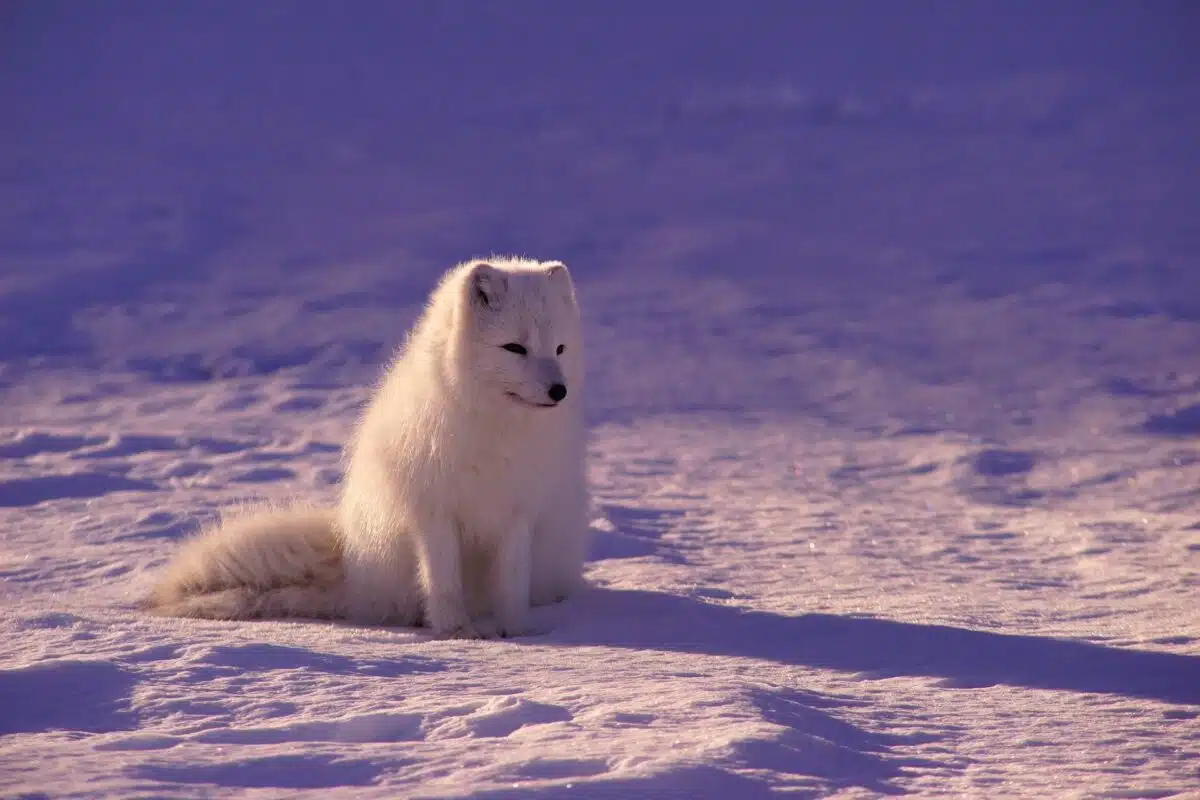The Arctic fox, with its pristine white winter coat and remarkable adaptations, epitomizes survival in Earth’s most unforgiving landscapes. This resilient canid thrives where few mammals dare to venture, embodying the delicate balance between fragility and strength in nature. As climate change increasingly threatens the frozen realms they call home, understanding these remarkable hunters becomes ever more urgent. Join us as we explore the fascinating world of Vulpes lagopus—from their extraordinary physiological adaptations to their complex social behaviors—and discover how these silent hunters have mastered life in the frozen wilderness.
Arctic Fox: Master of Camouflage

The Arctic fox possesses one of nature’s most dramatic seasonal transformations. During winter, its coat transforms into pure white (or occasionally blue-gray in coastal populations), rendering it nearly invisible against snow and ice. When summer arrives, this same fur shifts to brown or gray, blending perfectly with the tundra’s rocks and vegetation. This remarkable adaptation isn’t merely for show—it’s essential for both hunting and avoiding predators like wolves, polar bears, and golden eagles.
The fox’s color change is triggered by daylight duration rather than temperature, ensuring its camouflage aligns perfectly with seasonal landscapes regardless of weather fluctuations. This precise timing demonstrates the exquisite evolutionary refinement that has allowed these animals to thrive in the Arctic for thousands of years.
Anatomical Adaptations for Extreme Cold
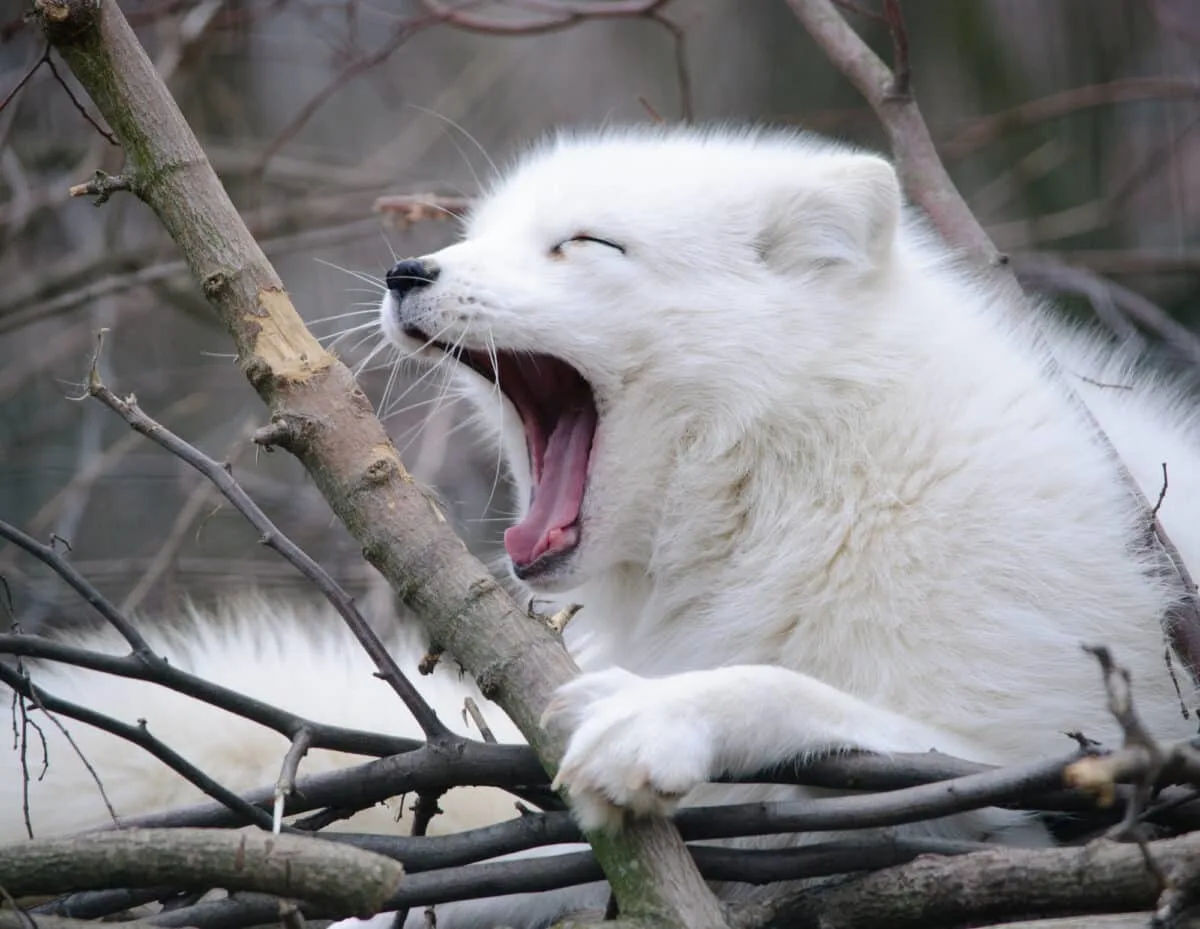
Arctic foxes have evolved extraordinary physical adaptations that enable survival in temperatures reaching -50°C (-58°F). Their compact bodies minimize heat loss, following Bergmann’s rule with reduced extremities compared to other fox species. Remarkably, their rounded ears, short muzzle, and furry paws all reduce exposure to the biting cold. Their paws are covered with dense fur, earning them the nickname “snow shoe foxes” as this insulation allows them to walk comfortably on frozen ground and provides traction on ice.
Perhaps most impressive is their circulatory system, which features countercurrent heat exchange—warm arterial blood flowing to the extremities warms the cooler venous blood returning to the heart, conserving crucial body heat. This sophisticated system maintains their foot temperature just above freezing point, preventing tissue damage while minimizing heat loss.
The Arctic Fox Diet: Opportunistic Survival
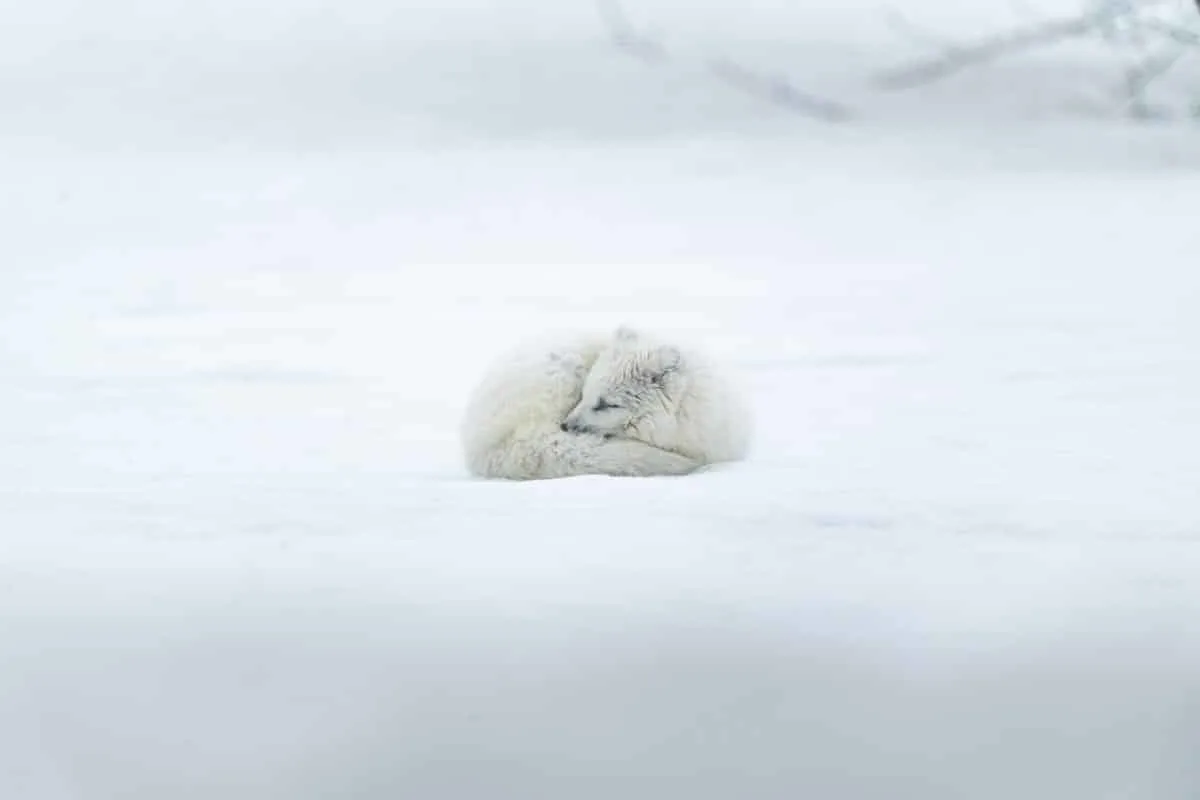
Survival in the Arctic demands dietary flexibility, and the Arctic fox excels as an opportunistic feeder. While primarily carnivorous, these adaptable hunters consume whatever resources become available through seasonal cycles. Lemmings form the cornerstone of their diet in many regions, with a single fox capable of consuming dozens daily during peak abundance. When lemming populations crash—as they cyclically do—Arctic foxes pivot to alternative food sources including birds, eggs, fish, marine invertebrates, and berries.
They frequently follow larger predators like polar bears to scavenge leftovers from kills. During summer abundance, they employ food caching behavior, storing surplus food in permafrost for lean times. Scientists have documented individual foxes creating hundreds of caches across their territories, demonstrating remarkable spatial memory as they retrieve these hidden reserves months later when food grows scarce.
Hunting Techniques in the Snow

The Arctic fox has developed specialized hunting methods perfectly adapted to the frozen landscape. Their most distinctive technique is known as “mousing”—a pouncing behavior where the fox leaps high into the air before plunging headfirst into the snow to capture prey hiding beneath. This remarkable hunting style relies on acute hearing that can detect small mammals moving under up to two feet of snow. The fox cocks its head from side to side, triangulating the exact position of prey before executing its precisely calculated dive.
Their success rate is impressive, particularly considering they must locate prey using primarily auditory cues. During winter hunts, they move methodically across their territory, listening intently before suddenly freezing in position, focusing completely on sounds below the snow surface before striking with explosive speed. These hunting skills are partially innate but refined through practice, with young foxes spending hours perfecting their pouncing technique.
Social Structure and Family Life

Arctic foxes typically form monogamous pairs, with relationships often lasting multiple breeding seasons. These family units become the foundation of their social structure, particularly during the breeding season. Dens, which may contain complex tunnel systems extending up to 1,000 square feet with multiple entrances, serve as the center of family life. Some dens have been continuously occupied for decades, passing between generations of foxes.
During pup-rearing season, the social dynamics intensify as both parents participate in raising young. Litters typically range from 5-10 pups, though in lemming peak years, extraordinary litters of up to 19 pups have been documented—the largest of any wild canid. The entire family cooperates in pup care, with older siblings from previous litters sometimes remaining to help raise their younger brothers and sisters, creating a form of cooperative breeding that enhances survival rates in harsh environments.
Remarkable Geographic Range

The Arctic fox maintains one of the most extensive circumpolar distributions of any land mammal, inhabiting the Arctic regions of North America, Europe, and Asia. Their range encompasses the northern coastal areas of Alaska, Canada, Greenland, Russia, Norway, Sweden, Finland, and Iceland. This impressive distribution demonstrates their exceptional adaptation to Arctic conditions. Unlike many Arctic specialists, they inhabit diverse terrain types within the polar region, from sea ice and coastal areas to inland tundra and mountainous regions, showcasing their ecological versatility.
Perhaps most astonishing is their capacity for long-distance travel. Radio-collared individuals have been documented traveling over 4,500 kilometers (2,800 miles) across Arctic sea ice—a journey longer than the width of the continental United States. These epic migrations occur primarily during food shortages, with foxes traveling up to 155 kilometers (96 miles) daily, highlighting their extraordinary mobility and endurance in extreme environments.
The Annual Breeding Cycle

The Arctic fox’s reproductive cycle is precisely synchronized with the harsh rhythms of Arctic seasons. Mating typically occurs in March and April when the landscape remains locked in winter’s grip. After a gestation period of approximately 52 days, pups are born in May to June, timing their arrival to coincide with maximum food availability during the brief Arctic summer. This strategic timing is crucial, as the short growing season provides a narrow window for pups to develop before winter returns.
Newborn pups weigh just 57 grams (2 ounces) and depend entirely on their mother’s milk for the first month. They grow rapidly, emerging from the den after 3-4 weeks and are weaned by 9 weeks. By autumn, juvenile foxes reach nearly adult size and must be sufficiently developed to survive the coming winter. This accelerated development timeline represents a remarkable adaptation to the compressed seasonal productivity of Arctic ecosystems.
The Intriguing Blue Morph Variant

While the white winter coat of the Arctic fox is its most recognized feature, a fascinating color variant exists known as the “blue morph.” These individuals, rather than turning white in winter, maintain a blue-gray to charcoal coloration year-round, with only slightly lighter winter pelage. This variant occurs primarily in coastal populations, particularly in places like Iceland and parts of Greenland, where the predominantly rocky coastal terrain makes darker coloration advantageous for camouflage.
The blue morph is genetically determined by a recessive allele, meaning both parents must carry the trait for offspring to express it. Historically, blue morphs were extensively trapped for their valuable fur, significantly reducing their numbers in many regions. In Iceland, where the entire fox population consists of blue morphs, these foxes have developed distinct behavioral adaptations focused on coastal resources rather than lemming cycles, demonstrating how color morphs can correlate with broader ecological specializations.
Survival Strategies During Arctic Winter

Winter in the Arctic presents extraordinary challenges, with months of darkness, temperatures plummeting below -30°C (-22°F), and significantly reduced food availability. Unlike many Arctic mammals, Arctic foxes don’t hibernate or migrate southward. Instead, they remain active year-round, employing multiple survival strategies. Their metabolic rate decreases by up to 25% during winter months, reducing energy requirements while maintaining activity. During severe blizzards, they may create temporary snow dens for shelter, curling into tight balls with their bushy tails covering their faces and feet to conserve heat.
Their remarkable fur provides insulation so effective that they only begin to shiver when temperatures drop below -70°C (-94°F)—their “thermoneutral zone” extends far lower than most mammals. Perhaps most crucially, they rely on food caches created during summer and autumn, with some foxes traveling extensive routes to access dozens of carefully hidden food stores. These combined adaptations allow them to maintain activity through the polar night when most other creatures have departed or entered dormancy.
Threats to Arctic Fox Populations
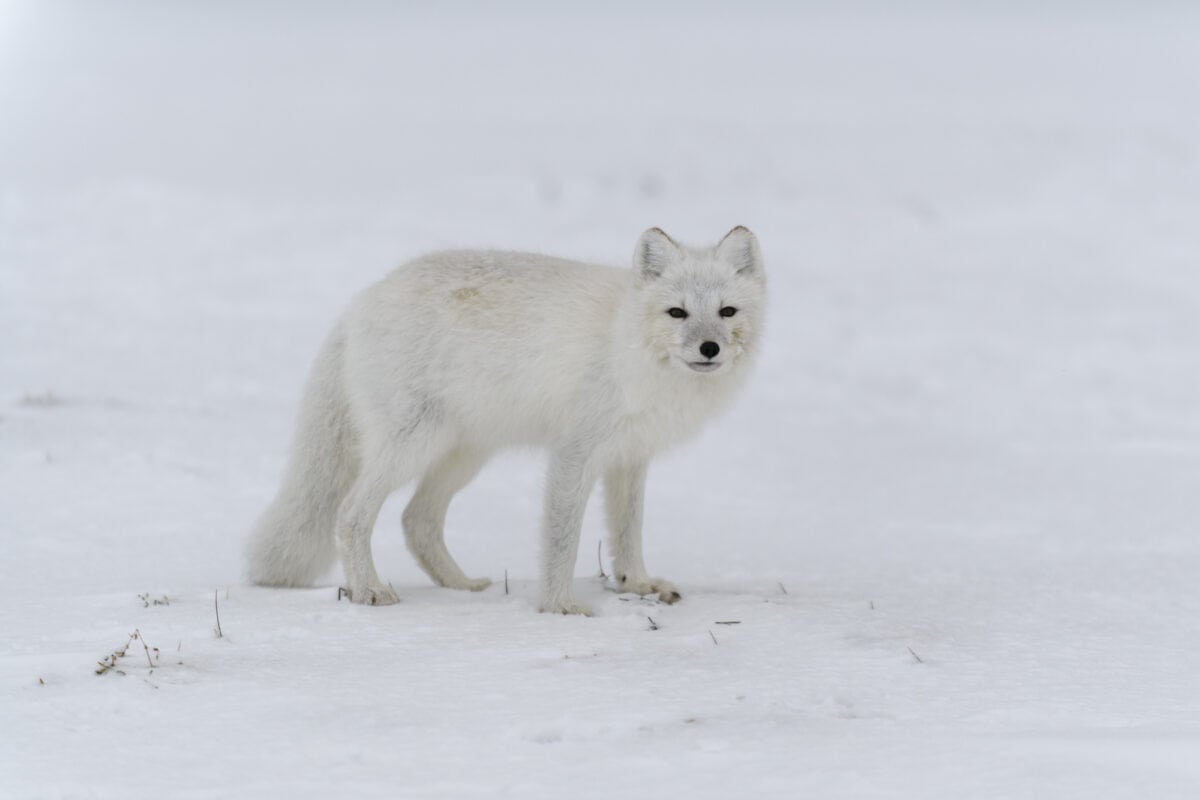
Despite their remarkable adaptations, Arctic foxes face mounting threats in the modern world. Climate change represents their most significant challenge, as warming temperatures allow the larger red fox to expand northward, outcompeting Arctic foxes for territory and resources. Research indicates red foxes can displace Arctic foxes through direct competition and occasionally predate on them. Diminishing sea ice further threatens populations that depend on marine resources or use ice for dispersal.
In Fennoscandia (Norway, Sweden, Finland), Arctic fox populations have declined by more than 90% since the early 20th century, driven by overhunting, habitat changes, and competition with red foxes. Conservation efforts include captive breeding programs, supplemental feeding, and red fox control measures in these regions. Disease transmission from domestic dogs presents another emerging threat, with cases of canine distemper and rabies documented in wild populations. Combined with historical overharvesting for the fur trade, these pressures place significant stress on populations across their range, making conservation efforts increasingly urgent.
The Arctic Fox’s Role in Ecosystem Dynamics
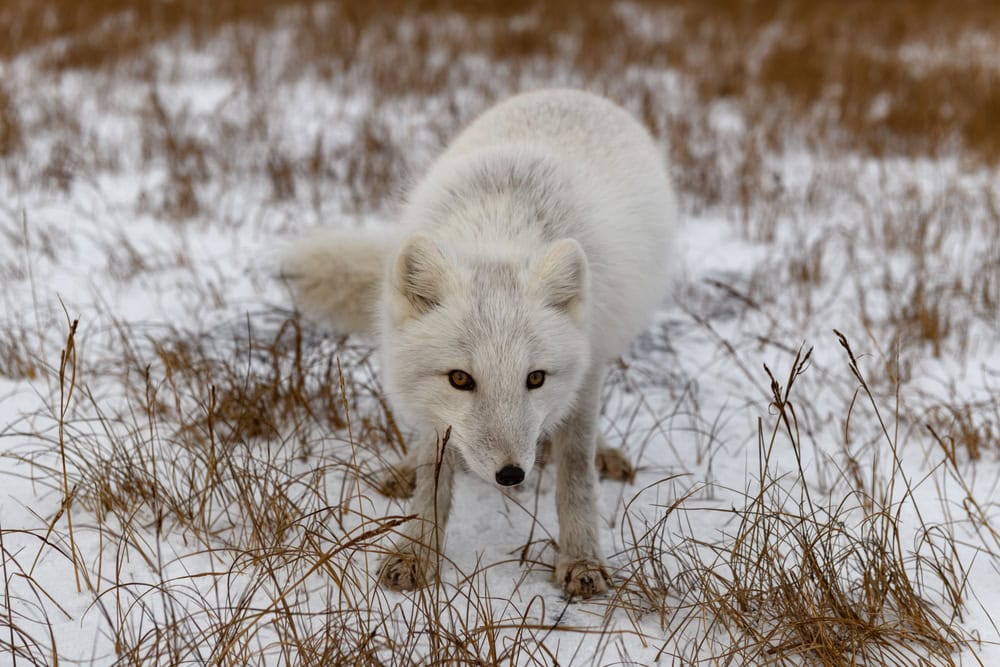
Arctic foxes serve as keystone species within the tundra ecosystem, influencing community structure through multiple ecological pathways. As mesopredators, they help regulate small mammal populations, particularly lemmings and voles, preventing the vegetation damage that can occur during rodent population explosions. Their caching behavior redistributes nutrients across the landscape, as partially decomposed food items enrich soil when unearthed. Around nesting bird colonies, fox predation influences both bird behavior and nesting success.
Perhaps most fascinatingly, their dens create biodiversity hotspots within the otherwise sparse tundra. The disturbed soil and nutrient enrichment around active dens creates microhabitats supporting distinctive plant communities with diversity up to three times higher than surrounding areas. These “fox gardens” feature more abundant grasses and flowering plants, attracting insects and birds. Research has identified more than 200 plant species associated with fox dens, demonstrating how this single species engineers environmental conditions that support biodiversity across trophic levels in one of Earth’s most challenging ecosystems.
Conclusion: Guardians of the Frozen North

The Arctic fox stands as a living testament to nature’s ingenuity and resilience, having evolved extraordinary adaptations that allow it to thrive in one of Earth’s most demanding environments. From its remarkable seasonal camouflage to its sophisticated heat conservation systems, every aspect of this diminutive predator has been refined through millennia of evolution in the frozen north.
As climate change transforms Arctic ecosystems at unprecedented rates, the fate of these silent hunters becomes increasingly uncertain, making continued research and conservation efforts essential to their survival. The Arctic fox reminds us that even in the most extreme environments, life not only persists but develops elegant solutions to seemingly insurmountable challenges—a powerful lesson in adaptation that takes on new significance as our planet faces accelerating environmental change.
- Animals We Eat (That Were Once Worshipped by Ancient Civilizations) - August 10, 2025
- What Scientists Found in Ice Cores From Alaska Will Shock You - August 9, 2025
- How Water Scarcity Could Spark Mass Migration in America - August 9, 2025

